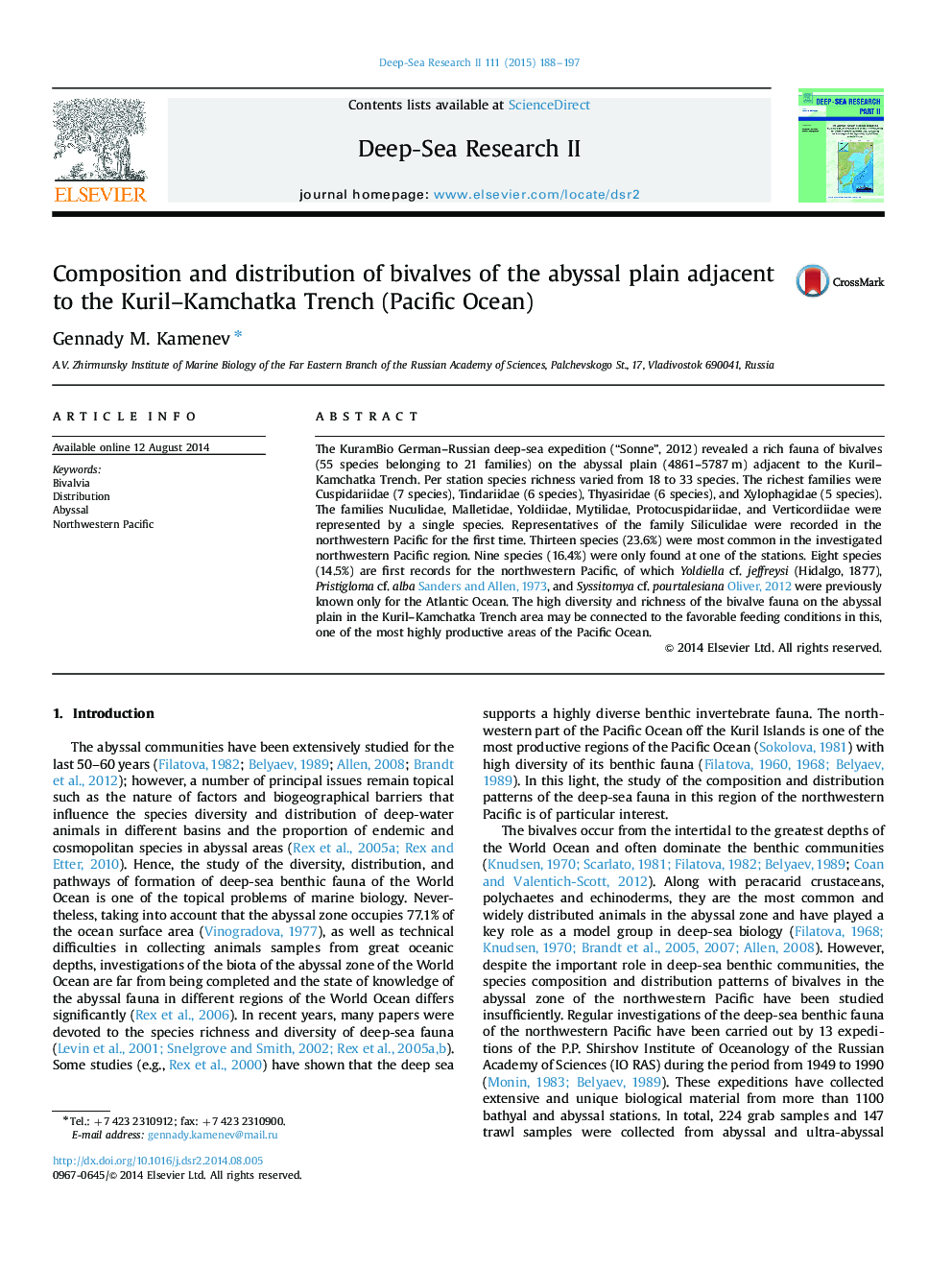| Article ID | Journal | Published Year | Pages | File Type |
|---|---|---|---|---|
| 4536290 | Deep Sea Research Part II: Topical Studies in Oceanography | 2015 | 10 Pages |
The KuramBio German–Russian deep-sea expedition (“Sonne”, 2012) revealed a rich fauna of bivalves (55 species belonging to 21 families) on the abyssal plain (4861–5787 m) adjacent to the Kuril–Kamchatka Trench. Per station species richness varied from 18 to 33 species. The richest families were Cuspidariidae (7 species), Tindariidae (6 species), Thyasiridae (6 species), and Xylophagidae (5 species). The families Nuculidae, Malletidae, Yoldiidae, Mytilidae, Protocuspidariidae, and Verticordiidae were represented by a single species. Representatives of the family Siliculidae were recorded in the northwestern Pacific for the first time. Thirteen species (23.6%) were most common in the investigated northwestern Pacific region. Nine species (16.4%) were only found at one of the stations. Eight species (14.5%) are first records for the northwestern Pacific, of which Yoldiella cf. jeffreysi (Hidalgo, 1877), Pristigloma cf. alba Sanders and Allen, 1973, and Syssitomya cf. pourtalesiana Oliver, 2012 were previously known only for the Atlantic Ocean. The high diversity and richness of the bivalve fauna on the abyssal plain in the Kuril–Kamchatka Trench area may be connected to the favorable feeding conditions in this, one of the most highly productive areas of the Pacific Ocean.
